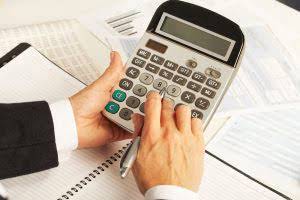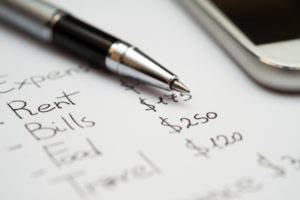Content

The common stock and preferred stock accounts are calculated by multiplying the par value by the number of shares issued. A liability is any money that a company owes to outside parties, from bills it has to pay to suppliers to interest on bonds issued to creditors to rent, utilities and salaries. Current liabilities are due within one year and are listed in order of their due date. Long-term liabilities, on the other hand, are due at any point after one year. The balance sheet provides an overview of the state of a company’s finances at a moment in time. It cannot give a sense of the trends playing out over a longer period on its own.

Private companies don’t need to file anything with the SEC but may still use balance sheets since they’re a simple way to look at a business’s financial standing at a point in time. https://kelleysbookkeeping.com/bookkeeping-payroll-services-at-a-fixed-price/ On the balance sheet, assets equal liabilities plus shareholders’ equity. You’ll want your balance sheet to include this calculation to provide insights into your financials.
Company
Balance sheets are one of the most critical financial statements, offering a quick snapshot of the financial health of a company. Learning how to generate them and troubleshoot issues when they don’t balance is an invaluable financial accounting skill that can help you become an indispensable member of your organization. Vertical balance sheets show assets at the top, with the balance sheet’s liabilities and shareholders’ equity sections presented below. Vertical balance sheets may be presented with columns for multiple years as comparative balance sheets. Liabilities include debt financing and other obligations, including accounts payable, accrued payroll, benefits, and taxes, lease obligations, and deferred revenue.
Includes non-AP obligations that are due within one year’s time or within one operating cycle for the company (whichever is longest). Notes payable may also have a long-term version, which includes notes with a maturity of more than one year. Accounts Payables, or AP, is the amount a company owes suppliers for items or services purchased on credit. As the company pays off its AP, it decreases along with an equal amount decrease to the cash account. Enter your name and email in the form below and download the free template now!
How to make a balance sheet.
As with assets, liabilities can be classified as either current liabilities or non-current liabilities. Any amount remaining (or exceeding) is added to (deducted from) retained earnings. Property, Plant, and Equipment (also known as PP&E) capture the company’s tangible fixed assets.

They are expected to last longer than a year and can depreciate over time. The company’s total overall liabilities are listed at the end of the liabilities section. Balance sheets for public companies in the U.S. must adhere to generally accepted accounting principles (GAAP). Private companies aren’t required to follow GAAP standards, but some do for the sake of consistency, especially if there are plans to go public in the future. Under equity, you may also find retained earnings, which arises whenever a company decides to keep net income after paying dividends. These formulas tell investors whether or not they will get a return on the money they invest in your company.
Asset Turnover Ratio: Definition and Formula
The accounting equation is required when using the double entry accounting system. A balance sheet is a financial statement that shows a company’s assets for a given period, such as a quarter or fiscal year. The sheet then explains how those assets are financed, either through liabilities (debts), equity (the sale of stocks and bonds), or a mix of both. A balance sheet is important because it shows business owners and investors what a company owns and owes during a specific period.
Prepaid expenses includes any prepayment that is expected to be used within one year. The summarized data displayed on one single sheet can provide detailed information on the condition of the company. Creating a year-end balance sheet will keep you on top of how your company is performing and if it’s on track to meet your goals. Below are balance sheet templates that you can use with Microsoft Excel to create one for your business.
Determine the time period you’re reporting on.
Stakeholders and financial analysts read and analyze financial statements, including balance sheets, income statements, and cash flow statements. Balance sheets include essential financial reporting information presented at a specific Retail vs Cost Method of Accounting point in time and are supplemented by required disclosures in the Notes to Financial Statements. This balance sheet also reports Apple’s liabilities and equity, each with its own section in the lower half of the report.
The format of the balance sheet is not mandated by accounting standards, but rather by customary usage. The vertical format is easier to use when information is being presented for multiple periods. A balance sheet shows the three main accounts (assets, liabilities, and equity) and compares the balances against previous periods. For example, an annual sheet will usually compare current balances to the prior year, and quarterly statements contrast the same quarter from the previous year. Typically, a line will also show that the sum of liabilities and equity equals total assets.

Aún no hay comentarios, ¡añada su voz abajo!